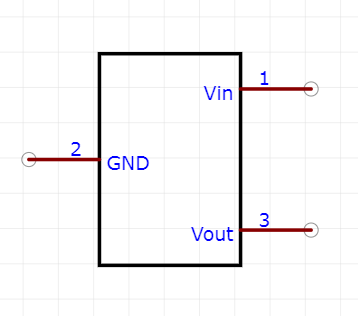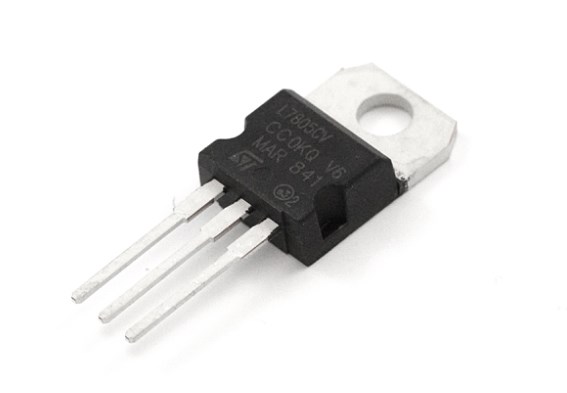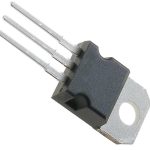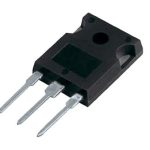Looking for a reliable voltage regulator for your electronic projects? You’ve come to the right place! In this blog, we will delve into everything you need to know about the LM7805 voltage regulator. From its key features and advantages to comparisons with other models, this comprehensive guide will equip you with all the necessary information about this popular integrated circuit.
What is the LM7805 linear voltage regulator?
The LM7805 is a widely used linear voltage regulator integrated circuit (IC) that converts a higher input voltage into a stable and regulated +5V output voltage. It is a popular choice for many electronic circuits and devices that require a steady source of power at +5V. The LM7805 is designed to deliver a maximum output current of 1A and has built-in thermal overload protection to prevent damage due to excessive heat.
How does an LM7805 voltage regulator work?
The operation of the LM7805 voltage regulator is relatively straightforward. It uses a series pass element (usually a transistor or a Darlington pair) to drop the excess voltage from the input down to the desired output voltage level (+5V for LM7805). This pass element acts as a variable resistance, adjusting itself to maintain a constant output voltage despite changes in the input voltage or load conditions.
The LM7805 also includes an internal voltage reference, error amplifier, and feedback loop. The feedback loop compares the output voltage with the reference voltage and adjusts the pass element accordingly to keep the output voltage stable. If the output voltage deviates from +5V, the error amplifier signals the pass element to either increase or decrease the resistance to bring the output back to the desired voltage.
Why do we use LM7805?
The LM7805 provides a regulated +5V output voltage, making it suitable for powering numerous digital and analog circuits that require a stable power supply. And it is easy to use as it requires minimal external components. With only three terminals (input, ground, and output) and bypass capacitors, it can be quickly integrated into various electronic projects.
Additionally, the LM7805 is widely available at affordable prices from numerous semiconductor manufacturers. It has a proven track record of reliability, with long operational lifetimes and built-in protections against thermal overload and short circuits.
Key Features
- Fixed Output Voltage: The LM7805 provides a fixed output voltage of 5V, making it suitable for applications that require a stable and regulated power supply.
- Wide Input Voltage Range: The input voltage range for the LM7805 is typically between 7V to 35V, allowing for flexibility in various applications.
- Low Dropout Voltage: The dropout voltage of the LM7805 is around 2V, which means that the input voltage must be at least 2V higher than the desired output voltage for proper regulation.
- High Current Capability: The LM7805 can handle a maximum output current of 1A, making it suitable for low to moderate power applications.
- Thermal Overload Protection: This voltage regulator includes built-in thermal overload protection, which helps prevent overheating and potential damage to the device.
- Short Circuit Protection: The LM7805 is equipped with short circuit protection, ensuring that the device remains safe even in case of accidental short circuits.
Advantage
1. Easy Availability
The LM7805 is widely available and can be easily obtained from electronic component suppliers, making it convenient for use in various projects.
2. Affordable Price
The LM7805 is an inexpensive integrated circuit, making it cost-effective for both hobbyists and professionals.
3. Versatile Functionality
With its fixed 5V output voltage, the LM7805 can be used in a wide range of applications requiring a stable power supply.
4. User-Friendly
The LM7805 is straightforward to use, with only three pins (input, ground, and output), making it suitable for beginners in electronics.
5. Reliable Performance
The LM7805 has been extensively used for many years and has proven to be reliable and robust in numerous applications.
Price
The price of the LM7805 can vary depending on the manufacturer, quantity ordered, and other factors such as package type. Generally, the LM7805 is an inexpensive component, typically costing a few cents to a couple of dollars per unit. However, it’s always best to check with specific suppliers or distributors to get accurate pricing information based on your requirements and location.
One Model: LM7805L-TA3-T
Introduction
The LM7805L-TA3-T is a specific variant of the LM7805 linear voltage regulator, manufactured by various semiconductor companies. It is a small-sized, three-terminal voltage regulator that provides a fixed output voltage of +5V. The “L” in the part number indicates a low dropout voltage version, which means it can regulate the output voltage even when the input voltage is only slightly higher than the desired output voltage.
PCB symbol and Footprint


Datasheet
You can click here or the picture below to learn more details from the LM7805L-TA3-T datasheet!
How to use LM7805?
Step 1: Gather the necessary components
You will need the following components:
- LM7805 voltage regulator
- Input power source (unregulated DC voltage)
- Capacitors (typically a 0.33µF capacitor and a 0.1µF capacitor)
Step 2: Connect the input voltage
Connect the unregulated DC voltage source to the input pin (pin 1) of the LM7805. This voltage should be higher than the desired output voltage by a margin that accommodates the dropout voltage of the LM7805.
Step 3: Add the input capacitor
To ensure stability and filter out any noise or fluctuations in the input voltage, connect a capacitor between the input pin (pin 1) and ground (pin 2) of the LM7805. A typical value for this capacitor is 0.33µF, but you can consult the LM7805 datasheet for specific recommendations.
Step 4: Connect the ground and output
Connect the ground pin (pin 2) of the LM7805 to the common ground of your circuit or system. Next, connect the output pin (pin 3) of the LM7805 to the +5V power rail of your circuit.
Step 5: Add the output capacitor
Similar to the input side, it’s advisable to add a capacitor between the output pin (pin 3) and ground (pin 2) of the LM7805. This capacitor further stabilizes the output voltage and helps mitigate any ripples or noise. A commonly used value for this capacitor is 0.1µF, but refer to the LM7805 datasheet for specific recommendations.
Step 6: Power up and test
With all the connections in place, power up the input voltage source. The LM7805 will regulate the input voltage down to a steady +5V output. You can measure the output voltage using a multimeter to verify that it is indeed +5V.
Note: It’s important to ensure that the LM7805 does not exceed its maximum current rating of 1A. If your load requires more than 1A, you may need to consider using a different regulator or add additional components like a heatsink to dissipate excess heat.

Comparison With Other Models
LM7805 vs LM317
The LM7805 and LM317 are both linear voltage regulators that provide a fixed output voltage. However, there are some key differences between the two.
One major difference is the input voltage range. The LM7805 can handle an input voltage up to 35V, whereas the LM317 can handle higher voltages, typically up to 40V or more. This makes the LM317 suitable for applications requiring a wider input voltage range.
Another difference is the output current capability. The LM7805 can provide a maximum output current of 1A, while the LM317 can handle higher currents, typically up to 1.5A or more. Therefore, if you need to regulate higher currents, the LM317 might be a better choice.
LM7805 vs LM3905
The LM7805 and LM3905 are both positive voltage regulators, but they differ in their output voltage ranges and maximum output currents.
The LM7805 provides a fixed output voltage of +5V, while the LM3905 offers an adjustable output voltage range. This means that you can adjust the output voltage of the LM3905 within a certain range, making it more versatile in certain applications where a specific output voltage is required.
In terms of maximum output current, the LM7805 can handle up to 1A, whereas the LM3905 has a lower maximum output current rating, typically around 500mA. If your application requires higher currents, the LM7805 would be a better choice.
LM7805 vs LM340
The LM7805 and LM340 are both positive voltage regulators, but they have some differences in their specifications.
One key difference is the input voltage range. The LM7805 can handle an input voltage up to 35V, while the LM340 can handle higher voltages, typically up to 40V or more. This makes the LM340 suitable for applications where a wider input voltage range is required.
Another difference is the maximum output current rating. The LM7805 can provide a maximum output current of 1A, while the LM340 can handle higher currents, typically up to 1.5A or more. So if you need to regulate higher currents, the LM340 would be a better choice.
LM7805 vs LM1117
The LM7805 and LM1117 are both popular positive voltage regulators, but they differ in terms of their dropout voltage and maximum output current. The dropout voltage is the minimum voltage difference required between the input and output for the regulator to maintain its specified output voltage.
The LM7805 has a higher dropout voltage compared to the LM1117, which means that the input voltage needs to be higher than the desired output voltage plus the dropout voltage in order for the LM7805 to work properly. The LM1117, on the other hand, has a lower dropout voltage, making it suitable for applications with low-voltage differentials.
In terms of maximum output current, the LM7805 can handle up to 1A, while the LM1117 has different variants with varying output current capabilities, such as 800mA or 1.5A. This makes the LM1117 a more flexible option if you require different output current ratings.
FAQs
Is LM7805 positive or negative?
The LM7805 is a positive voltage regulator. It takes in a higher input voltage and provides a regulated positive output voltage of +5V.
How much current can LM7805 handle?
The LM7805 can handle a maximum output current of 1A. It is important to ensure that the load connected to the regulator does not draw more current than what the LM7805 can safely provide, as exceeding its current limit may lead to overheating and potential damage to the device.
Conclusion
With its fixed 5V output voltage, wide input voltage range, high current capability, and various built-in protections, the LM7805 has established itself as a go-to choice for many electronics enthusiasts and professionals. Whether you’re working on a simple DIY project or a complex electronic system, the LM7805’s reliability, versatility, and affordability make it an indispensable component in your toolkit.




